The Whittaker Kingdom Classification also known as the Five-Kingdom Classification system, was proposed by Robert Whittaker in 1969. It divided living organisms into five groups: Kingdom Monera (bacteria and cyanobacteria), Kingdom Protista (single-celled eukaryotes), Kingdom Fungi (fungi and yeasts), Kingdom Plantae (plants), and Animal Kingdom (animals).
This system was widely used for many years but has since been modified and refined as our understanding of biology has evolved. Here we have briefly described the kingdom Plantae. The Plant Kingdom is the part of class 11th Biology syllabus and it is one of the most important topics for the NEET 2024 Exam.
Plant Kingdom
The Plant kingdom, often referred to simply as plants, includes a diverse group of multicellular eukaryotic organisms that primarily carry out photosynthesis to produce their own food. They are characterized by features such as cell walls made of cellulose, chloroplast containing chlorophyll, and the ability to reproduce through alternation of generations, involving both a haploid gametophyte and a diploid sporophyte phase.
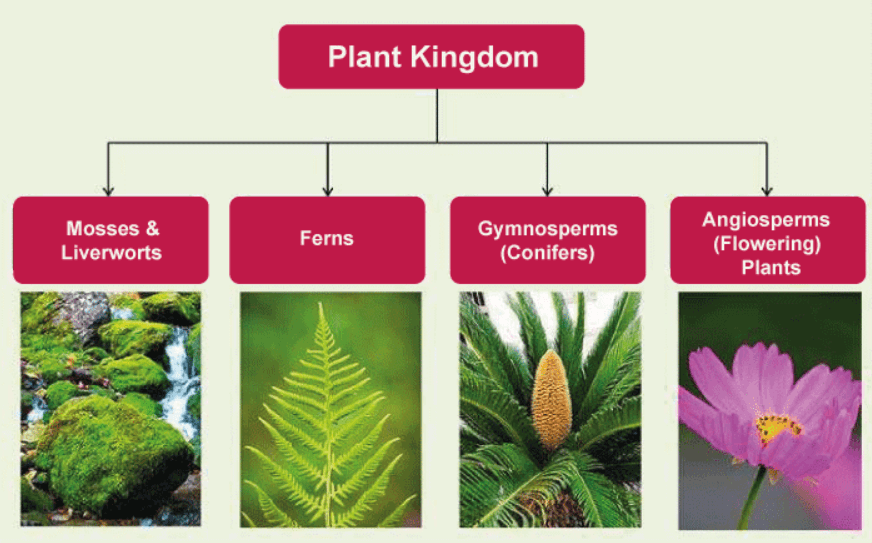
Plants play a crucial role in ecosystems by providing habitat for various organisms. They encompass a wide variety of forms, from microscopic algae to towering trees. The plant kingdom is divided into two groups: Cryptogams (which is further divided into Thallophyta, Brayophytta, and Pteridophyta) and Phanerogams (which is divided into Gymnosperms and Angiosperms).
Characteristics of Plant Kingdom
As we all know all the organisms that are present in the Plant kingdom have many different characteristics. Some of them are discussed below.
- The plant kingdom includes multicellular, eukaryotic organisms.
- Their cell walls are composed of cellulose.
- All the organisms in the plant kingdom are autotrophic, which means they are capable of performing the process of photosynthesis.
- They exhibit alternation of generations (haploid and diploid stages).
- Organisms in the plant kingdom have specialized tissues for transport (xylem and phloem).
- They possess protective features like cuticles and stroma.
- Reproduction occurs sexually (via spores and seeds) and asexually (through vegetative propagation).
- Organisms in the plant kingdom play a crucial role in ecosystems by providing oxygen, food, and habitat.
Examples of Plant Kingdom
The examples we mentioned below just showcase the diversity of plants within the Plant kingdom, ranging from trees and shrubs to grasses, ferns, and specialized adaptations for various environments.
- Oak Tree (Quercus): A type of angiosperm tree that produces acorns and is commonly found in forests.
- Rose (Rosa): An angiosperm shrub known for its colorful and fragrant flowers.
- Wheat (Triticum): An important cereal crop and angiosperm that provides grains used for making flour and other food products.
- Fern (Polypodium): A pteridophyte that reproduces using spores and is typically found in moist environments.
- Pine Tree (Pinus): A gymnosperm tree that produces cones and needles and is well-adapted to various climates.
- Moss (Bryophyta): A type of non-vascular plant that grows in damp habitats, often forming carpets of green.
- Sunflower (Helianthus): An angiosperm plant known for its large yellow flowers and edible seeds.
- Cactus (Cactaceae: A group of angiosperm plants adapted to arid environments, characterized by their succulent stems.
- Seagrass (Zostera): A group of angiosperms adapted to underwater environments, providing important habitats in coastal ecosystems.
- Fern Ally (Selaginella): A type of pteridophyte known as a club moss or spike moss, resembling ferns but with distinct reproductive structures.
Classification Of Plant Kingdom
The Plant Kingdom can be further classified into several divisions based on their characteristics and evolutionary relationships. The classification we mentioned below provides a general overview of the diversity within the plant kingdom. Remember that scientific understanding evolves over time, so there might be refinements or adjustments to these classifications as new information emerges.
| Phyla of the Plant kingdom | ||
| Phylum | Description | Examples |
| Thallophyta | The simplest plant phylum lacks distinct roots/leaves, includes algae, and fungi; exhibits diverse morphologies, and has crucial economic roles. | Green algae like Chlamydomonas, brown algae like kelp, and various fungi species. |
| Bryophyta | Non-vascular lack true roots and leaves, and reproduce via spores. | Mosses, Liverworts, Hornworts. |
| Pteridophyta | Vascular, reproduce via spores, have true roots and leaves. | Ferns, Horsetails, Clubmosses. |
| Gymnosperms | Seed-producing, seeds are not enclosed, often in cones. | Conifers, Cycads, Ginkgoes, Gnetophytes. |
| Angiosperms | Flowering plants, seeds enclosed in fruits, dominant group. | Monocots (grasses, Lillies, Orchids). |
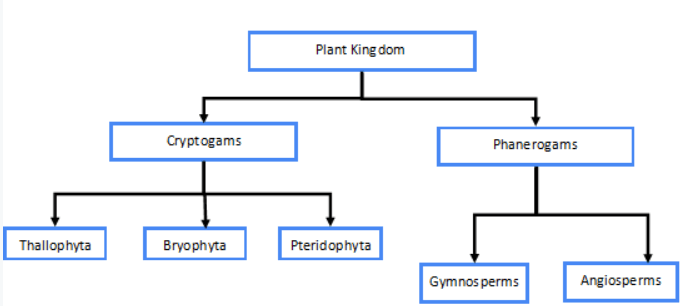
Phyla of Plant Kingdom
The Plant kingdom is broadly classified into several phyla: Thallophyta, Brayophytta, Pteridophyta, Gymnosperms, and Angiosperms. All these phyla of the plant kingdom are divided into two groups: Cryptogams and Phenerogans. Each phylum of the plant kingdom contains various plant species with distinct characteristics and adaptations.
Cryptogams
“Cryptogams” is a term used to collectively refer to non-flowering plants, including Bryophytes (mosses, liverworts, and hornworts) and Peridophyta (ferns, horsetails, and clubmosses), and Thallophyta. These plants reproduce by means other than seeds and do not produce flowers. The term “cryptogams” was historically used to describe plants with hidden reproductive structures, as their reproductive organs are often not as visibly prominent as those of flowering plants.
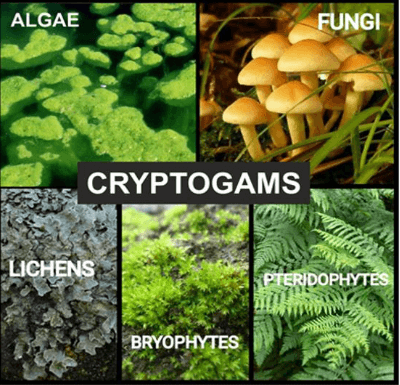
However, this term is less commonly used in modern botanical classifications, as it’s a bit outdated and doesn’t accurately reflect the complexity of these plant groups. Now let us describe all the phyla which are included in the cryptogams.
Thallophyta
Thallophyta is a now obsolete classification that was used to describe a group of plants in the past. Thallophyta included various non-vascular plants such as algae, fungi, and some simple organisms that didn’t fit neatly into other plant groups. However, modern classification systems have redefined the plant kingdom, and the concept of Thallophyta is no longer widely used. Instead, plants are categorized into various divisions based on their characteristics, such as bryophytes (mosses), pteridophyta (ferns), gymnosperms (cone-bearing plants), and angiosperms (flowering plants).
Bryophyta
Bryophyta is a division of non-vascular plants that includes mosses, liverworts, and hornworts. Bryophytes are also known as the “amphibians” of the plant kingdom. These plants lack true vascular tissues like xylem and phloem, which are responsible for transporting water, nutrients, and food throughout the plants. Due to their lack of vascular tissues, bryophytes are generally small in size and often found in moist environments where they can absorb water directly through their surface.
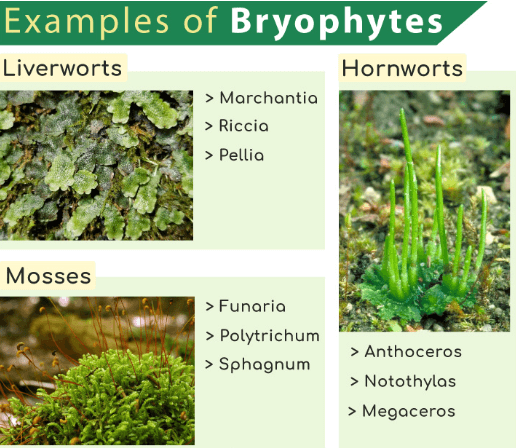
Bryophytes have a simple life cycle with alternation of generation, consisting of a haploid gametophyte stage and a diploid sporophyte stage. The gametophyte is the dominant stage and produces reproductive structures that release spores. These spores give rise to the sporophyte, which remains attached to the gametophyte and depends on it for nutrition.
Peridophyta
Pteridophyta is a division of plants that includes ferns, horsetails (also known as scouring rushes), and whisk ferns. Unlike bryophytes, pteridophytes have vascular tissues (xylem and phloem), allowing them to grow larger and more complex. They also have well-developed leaves, stems, and roots.
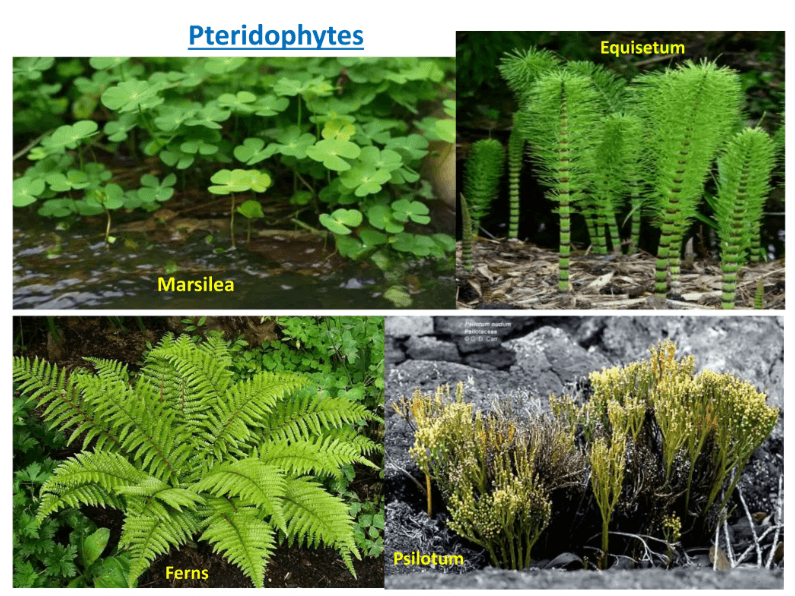
Pteridophytes reproduce by producing spores, similar to bryophytes, but they have a more advanced life cycle. The sporophyte generation is the dominant and is the larger, more visible stage of the plant. The sporophyte produces sporangia, which are structures that contain spores. These spores are released and grow into gametophytes. The gametophytes produce gametes (sperm and eggs), which fuse to form a zygote. The zygote then grows into a new sporophyte.
Phanerogams
“Phanerogams” is an older term used to describe seed-bearing plants, also known as ” spermatophytes”. These are plants that produce seeds as part of their reproductive cycle. Phanerogams are divided into two major groups: Gymnosperms and Angiosperms. The term “Phanerogams” is not commonly used in modern scientific literature, as it has been largely replaced by more precise terminology like “Gymnosperms” and “Angiosperms”.

Gymnosperms
Gymnosperms are plants that produce seeds without enclosing them in a fruit. They include conifers (such as pines, spruces, and firs), cycads, ginkgoes, and gnetophytes. Gymnosperms often have needle-like or scale-like leaves and are adapted to a range of environments, from cold temperate forests to arid regions.
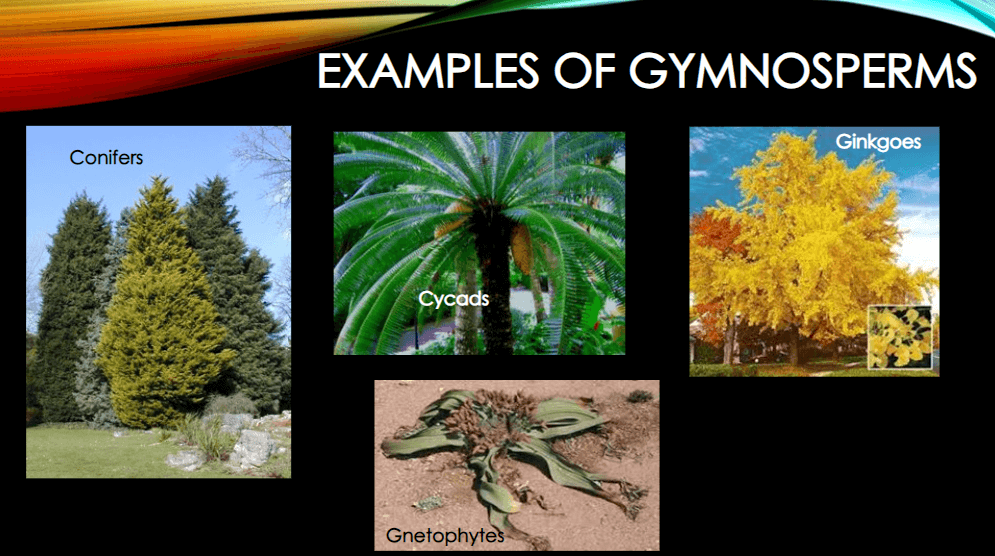
Angiosperms
Angiosperms are the most diverse and widespread group of plants on Earth. Angiosperms produce seeds enclosed within a protective structure called fruit. They can be further divided into monocots (for example; grasses, lilies, and orchids) and dicots (for example; roses, sunflowers, and oak trees). Angiosperms dominate terrestrial ecosystems and have a wide variety of forms, sizes, and adaptations.
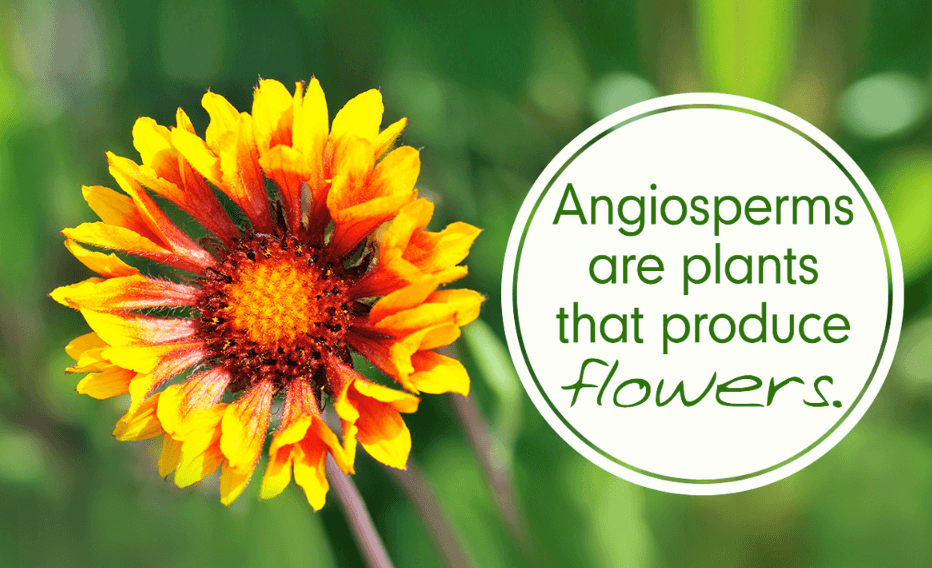
Important Questions Related to Plant Kingdom
Here we have discussed some questions about the plant kingdom that are most commonly asked in the exams.
Q1. What is the Plant Kingdom?
Ans: The plant kingdom also known as Plantae, encompasses a diverse group of multicellular organisms capable of photosynthesis. Plants range from tiny mosses to towering trees and provide oxygen, food, and habitat for other life forms. They play a crucial role in Earth’s ecosystems and are essential for sustaining life on our planet.
Q2. How is the plant kingdom useful to us?
Ans: The plant kingdom offers numerous benefits to humanity. Plants are a primary source of food, providing fruits, vegetables, grains, and herbs. They supply oxygen through photosynthesis and help mitigate climate change by absorbing carbon dioxide. Plants also contribute to medicine, textiles, and construction materials, enriching our lives in countless ways.
Q3. Why Mycoplasma is called the joker of the plant kingdom?
Ans: Mycoplasma is often dubbed the “joker” of the plant kingdom due to its unique characteristics. Unlike typical plants, it lacks a rigid cell wall, making it flexible in shape and difficult to classify. It can cause diseases in plants and is challenging to detect, making it an enigmatic and unpredictable member of the plant kingdom.
Q4. Why are bryophytes called amphibians of the plant kingdom?
Ans: Bryophytes are often referred to as the “amphibians” of the plant kingdom because they share similarities with amphibians in the animal kingdom. Like amphibians, bryophytes depend on water for reproduction, and they thrive in moist environments. They can tolerate both land and water conditions, showcasing a traditional adaptational similar to amphibian’s ability to live in both aquatic and terrestrial habitats.

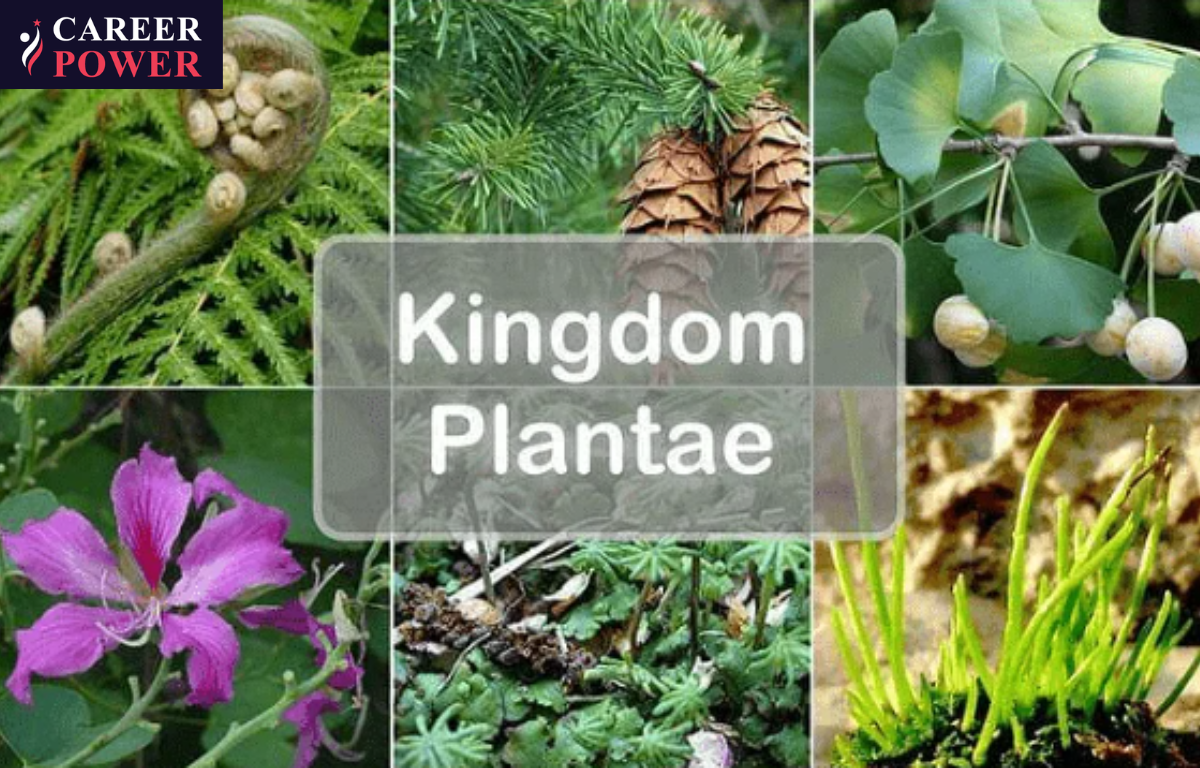

 50 Vegetables Name for Kids in English a...
50 Vegetables Name for Kids in English a...
 Food Chain: Definition, Types, Examples,...
Food Chain: Definition, Types, Examples,...
 Human Respiratory System: Definition, Di...
Human Respiratory System: Definition, Di...













